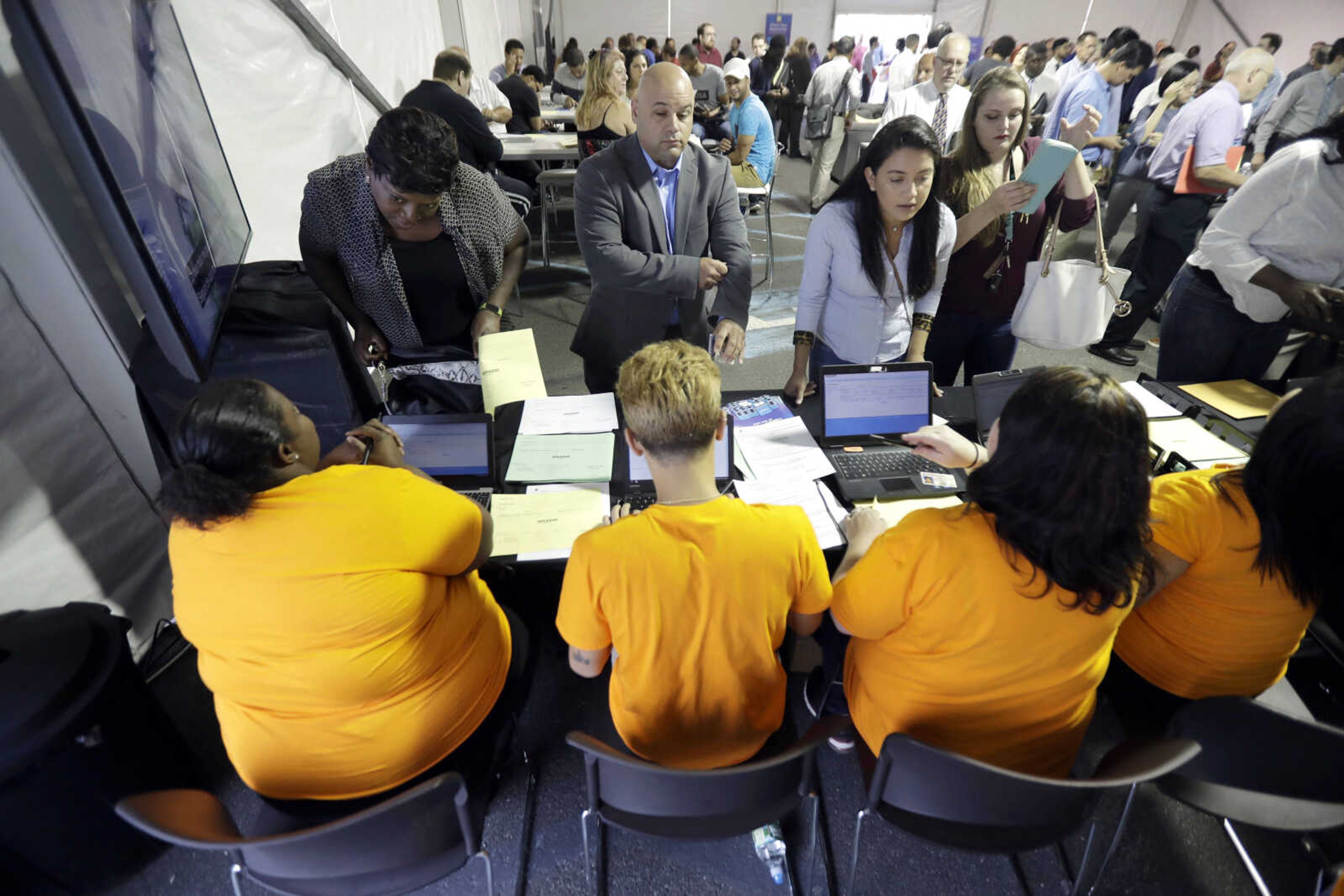U.S. employers closed out 2017 with modest but steady hiring
WASHINGTON -- U.S. employers added 148,000 jobs in December, a modest gain but still enough to suggest the economy entered the new year with solid momentum. The unemployment rate remained 4.1 percent for a third straight month, the lowest level since 2000. For all of 2017, employers added nearly 2.1 million jobs, enough to lower the unemployment rate from 4.7 percent a year ago...
WASHINGTON -- U.S. employers added 148,000 jobs in December, a modest gain but still enough to suggest the economy entered the new year with solid momentum.
The unemployment rate remained 4.1 percent for a third straight month, the lowest level since 2000. For all of 2017, employers added nearly 2.1 million jobs, enough to lower the unemployment rate from 4.7 percent a year ago.
Taken as a whole, Friday's government report points to the job market's strength and resilience 8 1/2 years into an economic expansion. Job growth remains steady and is underpinning an economy that's both contributing to and benefiting from an improved global outlook. The just-enacted U.S. tax cuts, too, are raising hopes for faster growth and higher corporate profits and fueling a powerful stock market rally.
At the same time, the pace of job growth is slowing, which typically happens when unemployment falls to ultra-low levels and fewer people are available to be hired. Average monthly job gains have declined to 171,000 this year from a peak of 250,000 in 2014. Last year's job gains were the fewest since 2010.
Despite the low unemployment and the difficulty some employers face in finding enough qualified workers, pay gains remain sluggish. Average hourly earnings rose 2.5 percent in December from a year earlier -- about a full percentage point lower than is typical in a healthy economy.
The December job growth, while modest, underscores the economy's continued health. Last month's pace of hiring is enough, over time, to lower the unemployment rate.
The steady but unspectacular pace of hiring and modest wage gains make it unlikely the Federal Reserve will feel compelled to accelerate its pace of rate increases. Blockbuster job growth and rapid pay increases would have stoked fears inflation could accelerate and potentially have nudged the Fed toward quicker rate hikes -- something many stock investors fear.
Investors seemed pleased and sent stock prices up, one day after the Dow Jones industrial average broke through the 25,000 mark for the first time.
"You've got the 'Goldilocks' pace for markets: Strong growth and low inflation," said Carl Tannenbaum, chief economist at Northern Trust.
The unemployment rate for African-Americans reached a record low of 6.8 percent in December. And the jobless rate for veterans of Afghanistan and Iraq fell to 3.3 percent, also a record low.
The African-American rate is still much higher than the rate for whites, which was 3.7 percent, or Asian-Americans, at 2.5 percent. Blacks have long had a higher unemployment rate than whites. But the gap is now at its lowest level since 1972, when the government began tracking the data, according to Michael Feroli, an economist at JPMorgan Chase.
Solid economic growth in the United States and major countries overseas is supporting more hiring. Factory managers received the most new orders in December than in any month since 2004. Retailers have reported strong holiday sales. Builders are ramping up home construction to meet growing demand.
Sales of existing homes reached their fastest pace in nearly 11 years in November. Consumer confidence is at nearly a 17-year high. And the Dow Jones industrial average reached 25,000 for the first time Thursday.
Manufacturing and construction reported strong job gains in December, adding 25,000 and 30,000 jobs, respectively. A category that includes hotels and restaurants gained 29,200.
Retailers cut 20,300 jobs, mostly in department-store chains such as Macy's, which announced last week it would close 11 additional stores. That suggests stores hired fewer seasonal workers for the winter holidays, a sign of the impact of e-commerce.
Transportation and warehousing, a category that has grown substantially this year to keep up with online deliveries, added just 1,800 positions in December.
Most economists expect the Trump administration's tax cuts to help speed the economy's already decent pace of growth. Some envision the unemployment rate dropping as low as 3.5 percent by the end of 2018.
A rate that low would mark the lowest such level in nearly a half-century, and it likely would force businesses to accelerate pay raises to attract and retain employees. Pay raises have remained weak for many U.S. workers despite the robust job market.
Some businesses, though, already are howling they can't find enough qualified people. There are roughly 6 million available jobs, near a record high, according to government data. Should unemployment fall to 3.5 percent, those complaints will intensify.
For at least two years, economists have been expecting the falling unemployment rate to boost wages. They point to several trends that may be keeping a lid on wage gains.
As the vast baby boom generation ages -- 10,000 of them are turning 65 every day -- they are retiring and are being replaced by younger workers, who typically earn less money. That is likely suppressing overall wage growth, economists say.
Worker pay also depends on productivity, or how efficient employees are. And productivity has been weak for roughly a decade.
In 2000, the last time the unemployment rate fell this low, wages were growing at a 4 percent annual pace. But productivity, which measures workers' output per hour, was much higher then. A falling unemployment rate can force up pay, but rising productivity has a much greater effect.
Connect with the Southeast Missourian Newsroom:
For corrections to this story or other insights for the editor, click here. To submit a letter to the editor, click here. To learn about the Southeast Missourian’s AI Policy, click here.










